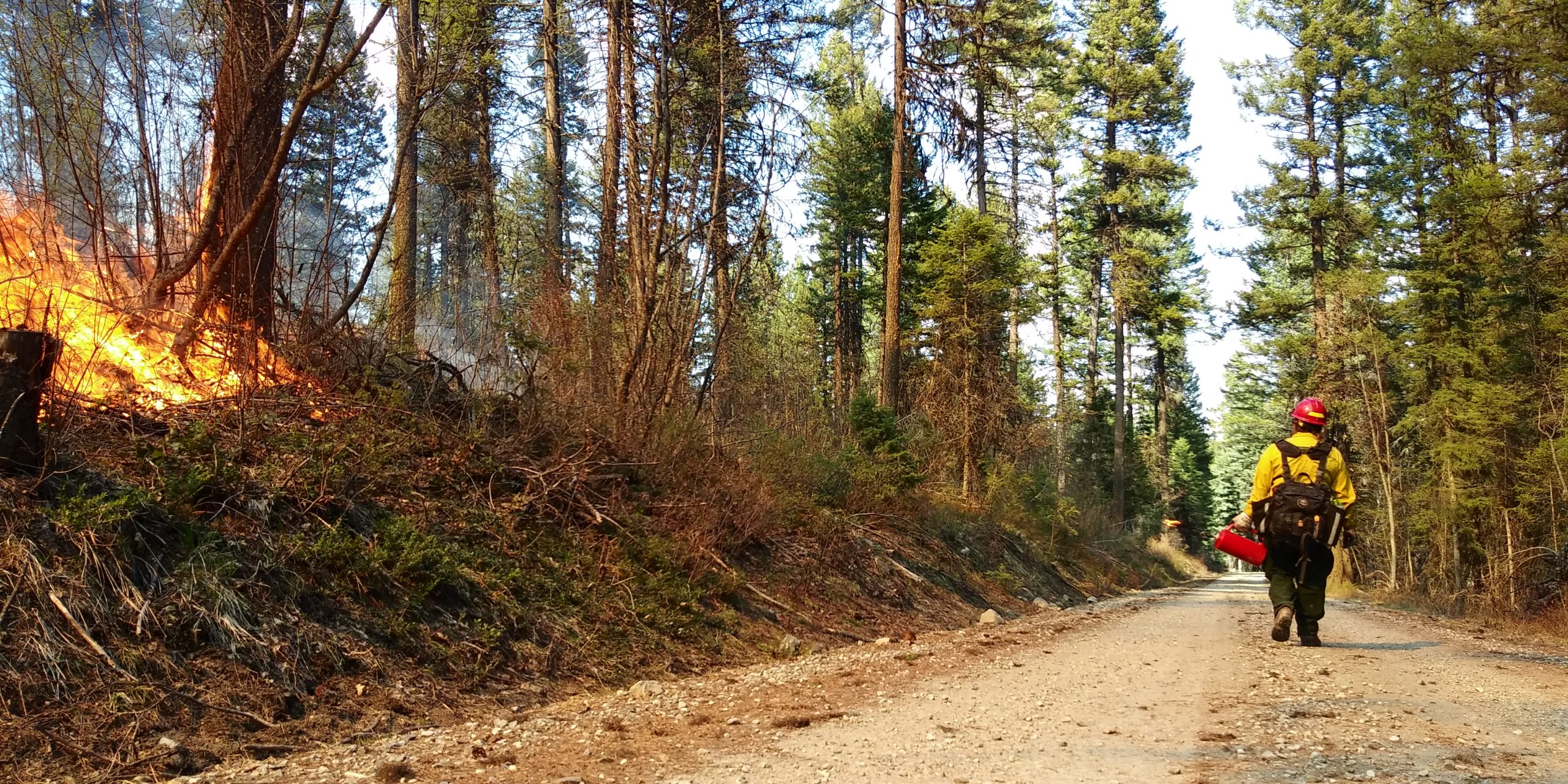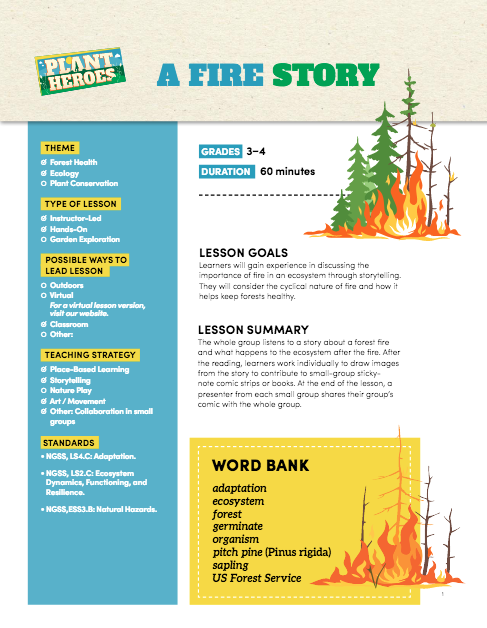
At Plant Heroes we dedicate our days to creating great resources for learning about nature, trees, and forest ecosystems—and you can’t learn about forests without learning about fire! Can fire be destructive and scary? Absolutely. But wildfires also play a major role in keeping forest systems healthy. Trees depend on them and so we depend on them. Let’s explore more about “fire ecosystems” and about how humans can (and do) live with fire.
Can fire be destructive and scary? Absolutely. But wildfires also play a major role in keeping forest systems healthy.
What is a wildfire?
National Geographic’s online encyclopedia, https://www.nationalgeographic.org/encyclopedia/wildfires/, has an excellent definition of wildfire: “A wildfire is an uncontrolled fire that burns in the wildland vegetation, often in rural areas. Wildfires can burn in forests, grasslands, savannas, and other ecosystems, and have been doing so for hundreds of millions of years.” We will also talk about prescribed fire and cultural burns which are started on purpose and managed by humans. Read more about that below!
Why are fires important to some plants and forests?
Not every forest needs fire, but the trees and other living things in many of the world’s forests have evolved or adapted to depend on fire as part of a natural cycle. Fires can thin or clear out underbrush (“litter”) and invasive species from forest floors that may be blocking new growth. Some seeds depend on fire in order to germinate (start growing), and fires put nutrients back into the earth that help new and existing plants too. These are just some of the ways in which fire can be helpful to a forest ecosystem.
Who lives and works with fire?
Native Americans and other Indigenous people worldwide have been stewards of the land and managed fire in forests for cultural and practical reasons for thousands of years. Being a steward of the land means caring for and taking actions to protect the natural ecosystems. On some lands today, tribes, wildland managers, conservation organizations, local governments and fire scientists are collaborating to steward the land and manage prescribed or cultural burns. These efforts can also help to reduce destructive, uncontrolled wildfires.
It’s important to learn about fire so we can all be good stewards of the land. Plant Heroes are always learning!

"A Fire Story" Lesson for In-Person or Virtual Learning
Fire has historically been vital to many ecosystems—and it still is! In this lesson, learners discover why fires are important, how plants have adapted, and how conservation professionals and volunteers safely use controlled burns to keep forest systems healthy. We’ve created both virtual and in-person and versions of this 60-minute lesson, “A Fire Story,” (best for grades 3-4). Learners will practice observation skills, storytelling, using science vocabulary, and collaboration.
Other Fire Resources
Take a virtual tour of the Missoula Fire Science Lab.
Watch a 10-minute educational and action-packed video from the U.S. Forest Service, "A Better Way to Think About Wildland Fires."
Learn about four native plants that depend on or benefit from fire in the ecosystem.
https://www.wildflower.org/magazine/native-plants/burns-into-boons
Written by: Angel Horne